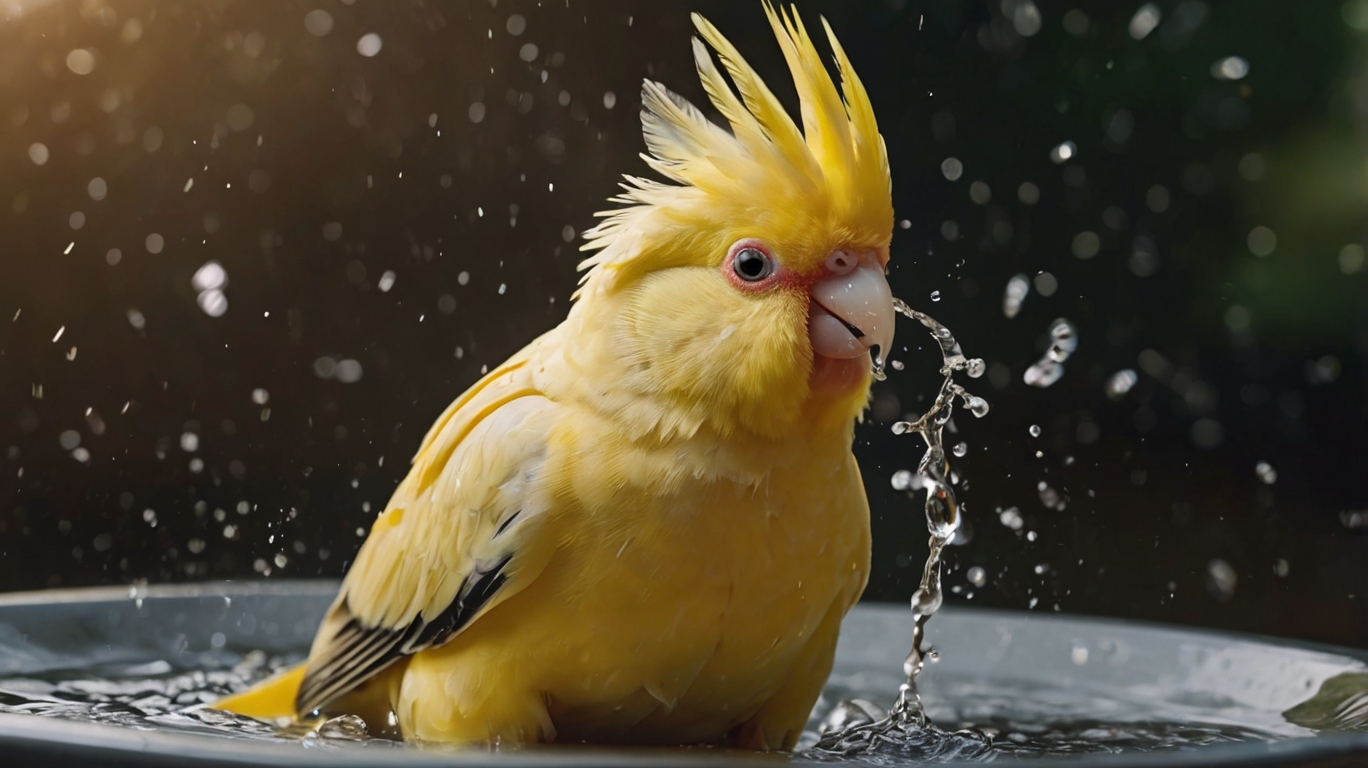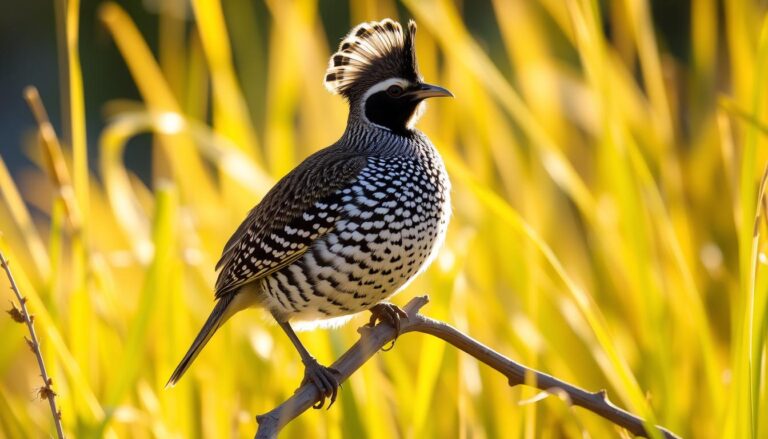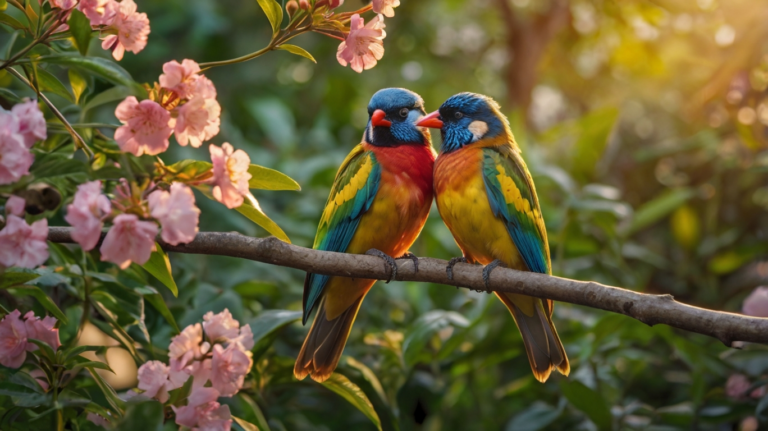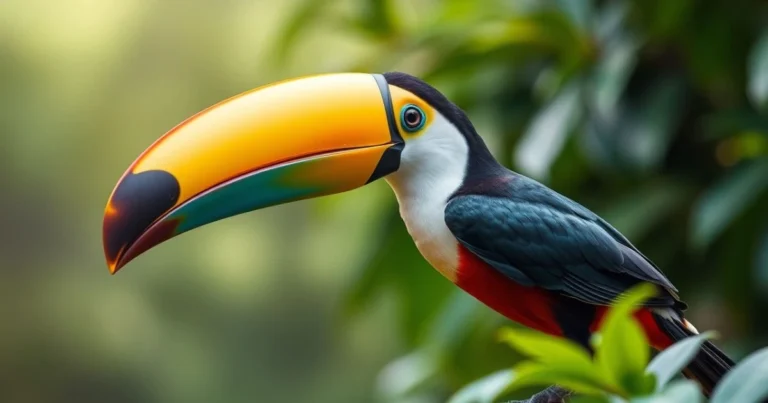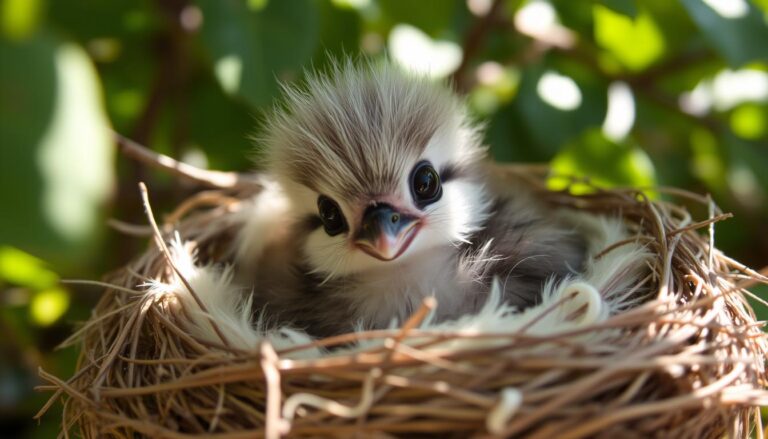Lutino Yellow Cockatiel: 7 Amazing & Heartwarming Insights
Introduction
Have you ever spotted a luminous little parrot with vibrant yellow plumage, adorably round orange cheeks, and a gentle whistle that could melt your heart? If so, you’ve already experienced the charm of the lutino yellow cockatiel. Whether you’re a first-time bird enthusiast or an experienced avian aficionado, this delightful companion has a way of lighting up any household—both literally and figuratively.
Cockatiels (Nymphicus hollandicus) originate from Australia, but this particular mutation called the lutino yellow cockatiel has become popular around the world, especially in the United States. Its bright coloring makes it an eye-catching pet, while its sweet personality ensures it’s just as delightful to interact with. If you’ve ever wondered what sets a lutino yellow cockatiel apart from other cockatiel mutations or how to provide the best possible care, you’ve landed in the perfect place.
In this comprehensive guide, we’ll dive into every aspect of the lutino yellow cockatiel, from its intriguing history and distinctive looks to how you can ensure it thrives in your care. Expect expert-backed tips on nutrition, habitat setup, training, and much more. By the end, you’ll feel fully prepared to welcome a lutino yellow cockatiel into your family—or enhance the bond with the one you already cherish.
The Enchanting World of Lutino Yellow Cockatiels
A Bright Spot in Cockatiel History
The lutino yellow cockatiel mutation emerged through selective breeding once cockatiels became widely kept as pets outside their native Australia. While the wild type cockatiel has a gray body with a yellow face and orange cheek patches, breeders noticed certain chicks hatching with reduced melanin, causing their feathers to appear yellow or cream. Over generations, this trait was established and refined, giving us the vivid lutino yellow cockatiel we love today.
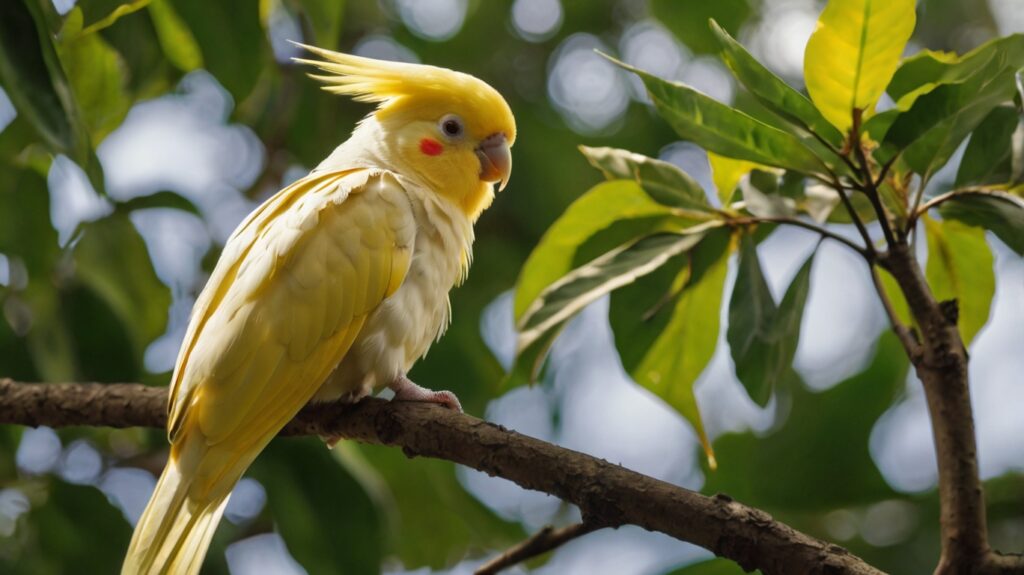
Early records suggest that the first lutino cockatiel mutation appeared in the 1950s. Soon after, avian enthusiasts recognized that this unique coloration could be made stable. What began as a rare occurrence quickly grew in popularity; now, you’ll likely find a lutino yellow cockatiel as a standard offering in many reputable pet stores and breeding facilities across the United States.
Distinctive Plumage and Features
What makes the lutino yellow cockatiel impossible to miss is its color palette:
- Body and Wings: Ranges from pale lemon yellow to deep pastel.
- Face and Crest: Typically a lighter yellow tone, with an upright, slender crest that bobs whenever the bird is excited or alarmed.
- Orange Cheek Patches: One of the most recognizable markers, usually bright orange circles on each cheek.
- Eyes and Feet: Often pinkish or red-toned in true lutinos due to reduced melanin.
While some cockatiels might carry partial lutino genes, the “true” lutino yellow cockatiel sports that signature sunshine glow on almost every feather—save for subtle white or cream highlights.
Personality Perks
Of course, color alone doesn’t make a pet worth having. The lutino yellow cockatiel stands out just as much for its sociable nature, curiosity, and gentle demeanor. Here are some characteristics you might notice:
- Affectionate Bonding: Lutino yellow cockatiels can form deep attachments with their humans, often displaying a penchant for head scratches and gentle cuddles.
- Chatty, But Not Overly Loud: They might whistle or mimic simple tunes, but they’re not usually as boisterous as larger parrots.
- Playful Curiosity: They enjoy exploring new toys, nibbling on safe perches, and interacting with family members who offer kindness and attention.
When nurtured properly, a lutino yellow cockatiel can become a cherished member of your household, greeting you each morning with sweet chirps and entertaining you through the day with its perky personality.
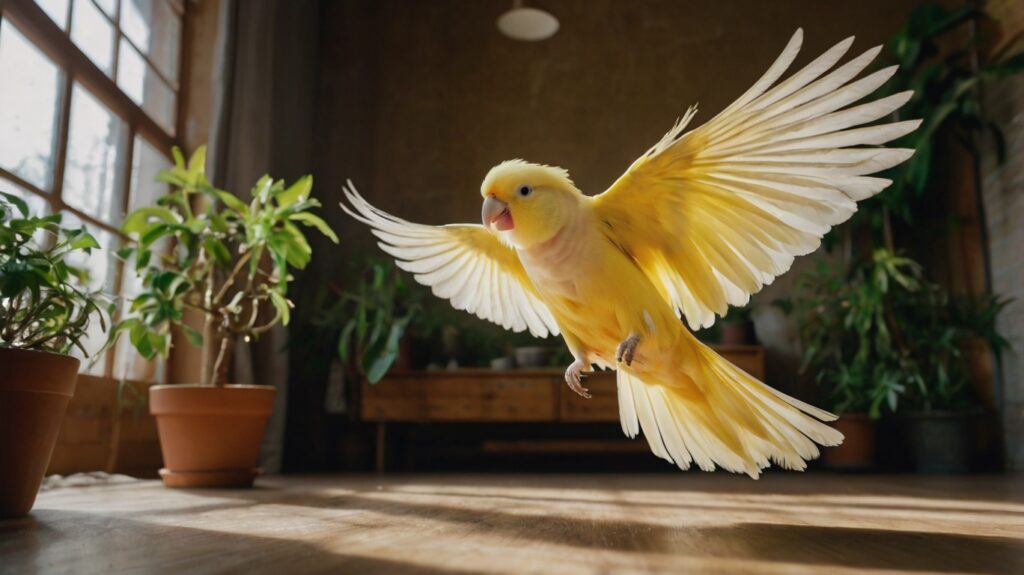
Setting Up the Ideal Home for Your Lutino Yellow Cockatiel
Cage Dimensions and Bar Spacing
To ensure your lutino yellow cockatiel has plenty of space to stretch and flutter, opt for a cage that measures at least 24 inches wide, 18 inches deep, and 24 inches tall. If you can go bigger, do so—cockatiels thrive with more room. Bar spacing should be around 1/2 inch to 5/8 inch to keep your bird from squeezing through or getting its head stuck.
Cage Placement and Environmental Factors
Where you place your lutino yellow cockatiel’s cage can have a big impact on its well-being:
- Noise Level: Put the cage in a relatively quiet corner that still sees regular household activity. Cockatiels want to feel included without being startled by sudden sounds.
- Temperature: Aim for a consistent ambient temperature of 65–80°F (18–27°C). Avoid drafts and direct sunlight that might overheat your cockatiel.
- Lighting: Natural light is beneficial, but shield your lutino yellow cockatiel from harsh, direct rays. A corner with filtered daylight is ideal.
Perches and Accessories
Different perch materials help exercise your lutino yellow cockatiel’s feet while preventing pressure sores or joint stiffness. Consider including:
- Natural Wood Perches: Varied thickness offers different gripping challenges.
- Rope Perches: Soft on the feet, though you should check regularly for frayed strands.
- Concrete or Mineral Perches: Help file down nails but shouldn’t be the bird’s only perch.
Include a few toys (like foraging puzzles or chewable wood pieces) to keep your lutino yellow cockatiel mentally stimulated. You might also place a small ladder or swing inside the cage—both can provide hours of entertainment.
Nutrition and Diet Essentials
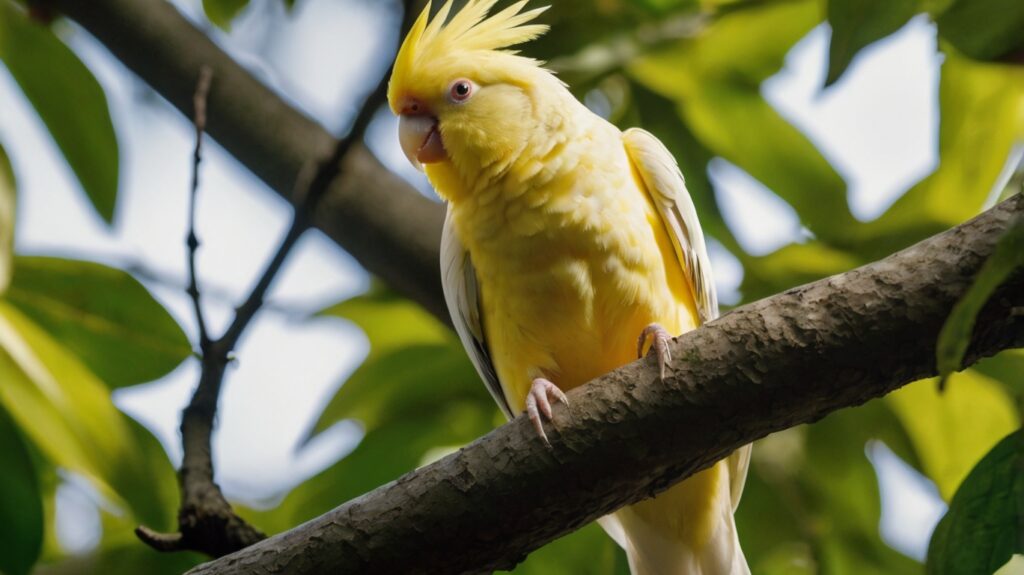
The Core Diet
A balanced diet is crucial to the health of any parrot, including the lutino yellow cockatiel. According to the Association of Avian Veterinarians (AAV), high-quality pelleted food designed for small parrots should make up roughly 60–70% of your cockatiel’s daily intake. Pellets ensure consistent nutrition, including vitamins and minerals that may be lacking in seed-only diets.
Seeds, Fruits, and Veggies
A lutino yellow cockatiel will appreciate variety. While pellets form the basis, supplementing with:
- Seeds: Millet and sunflower seeds in moderation can be treats or part of a balanced mix.
- Fresh Vegetables: Options like spinach, kale, carrots, broccoli, and bell peppers.
- Fresh Fruits: Apples (seedless), blueberries, grapes, or melon in small portions.
Strive for about 20–25% of the diet to be a mix of seeds, veggies, and fruits. Always wash produce thoroughly to remove pesticide residues, and remove any perishable food from the cage after a few hours to avoid spoilage.
Treats, but in Moderation
Occasional treats can help reinforce good behaviors. Small pieces of whole-grain bread, unsalted crackers, or a fragment of millet spray can delight your lutino yellow cockatiel. Just be sure treats remain under 10% of the total diet so your feathery friend doesn’t veer into an unbalanced lifestyle.
Socializing and Bonding with Your Lutino Yellow Cockatiel
Building Trust
When you first bring your lutino yellow cockatiel home, it might be shy or stressed. Give it a few days to adjust to its new surroundings, during which you speak softly and avoid sudden movements. Gradually introduce your hand into the cage, offering a treat while maintaining a calm, friendly tone. This positive reinforcement approach encourages your bird to see you as a source of safety, not a threat.
Daily Interaction
Cockatiels are flock animals. If you only have one lutino yellow cockatiel, you must step in as a member of its “flock.” Dedicate time each day for:
- Gentle Talking: A calm voice helps your bird feel secure.
- Head Scratches: Once trust is established, your cockatiel may lean its head down, a clear invitation for gentle petting.
- Play Sessions: Toys, mirrors, or training exercises can keep your cockatiel physically and mentally active.
Whistling and Talking
While the lutino yellow cockatiel can pick up certain sounds or simple words, it more commonly excels in whistling tunes. You might notice that males tend to be more vocal and prone to mimicry than females. If you want to teach your cockatiel a particular phrase or whistle, be consistent and patient—repeat the sounds, and reward attempts with a favorite treat or enthusiastic praise.
Health and Wellness
Routine Checkups
A healthy lutino yellow cockatiel displays bright eyes, clean feathers, and an energetic demeanor. Schedule an annual visit to an avian veterinarian to catch any potential issues early. For instance, a vet might detect subtle nutritional deficits or early signs of respiratory problems that can be corrected before they become serious.
Common Health Concerns
Certain symptoms may signal underlying illness in your lutino yellow cockatiel:
- Excessive Sneezing or Nasal Discharge: Could point to respiratory infections.
- Changes in Droppings: Diarrhea, or unusual color or frequency.
- Lethargy or Fluffed-Up Appearance: Might be an early sign of sickness or stress.
- Feather Loss Beyond Normal Molting: Could indicate nutritional deficiencies, parasites, or self-plucking.
At any sign of concern, consult your avian vet. Quick intervention can often reverse potential health threats.
Safe Grooming Practices
Most cockatiels are excellent at self-grooming (preening). Still, you can assist by providing a shallow dish of lukewarm water or offering a gentle mist bath. Keep an eye on nail growth; overgrown nails may snag on cage bars or toys. You might let your vet handle nail trims if you’re uneasy doing it yourself. Wing trims are optional—some owners prefer letting their lutino yellow cockatiel fly in a safe, enclosed space, while others choose partial wing clipping for easier control.
Exercises and Activities
Encouraging Flight and Exploration
If you opt not to clip your lutino yellow cockatiel’s wings, providing a bird-safe room can boost its mental and physical health. Make sure windows and mirrors are covered or easily visible to prevent collisions. Your lutino yellow cockatiel might gleefully flap around the room, land on a perch, or investigate shelves—always under supervision for safety.
Toy Rotation
Cockatiels can get bored quickly if they see the same toys every day. Rotate them weekly or introduce new ones to maintain your lutino yellow cockatiel’s interest. Foraging toys, in which you hide treats or small bits of pellet, stimulate natural curiosity and problem-solving skills.
Interactive Play
Consider short training sessions that double as playtime:
- Step-Up Command: Teach your cockatiel to step onto your finger or a perch on command.
- Target Training: Use a small stick or target; reward your cockatiel when it touches the target with its beak.
- Simple Tricks: Cockatiels can learn to shake or nod on cue with repeated practice and consistent rewards.
Through these interactive games, you build a stronger bond, keeping your lutino yellow cockatiel engaged and well-exercised.
Potential Behavioral Issues and Remedies
Screaming or Excessive Vocalizing
While the lutino yellow cockatiel isn’t as noisy as larger parrots, it can still develop a habit of screaming if it feels neglected or anxious. This often happens when the bird lacks mental stimulation or daily human interaction. To remedy this:
- Provide more attention and structured play.
- Keep a consistent schedule for feeding and social time.
- Offer new toys or rotate existing ones to relieve boredom.
If you respond to screams by rushing to the cage, you may inadvertently reinforce the behavior. Instead, praise quiet moments and give attention when your bird is calm.
Feather Plucking
Occasional preening is normal, but self-plucking is a sign something’s amiss. It could be stress, allergies, or a nutritional deficiency. Making sure your lutino yellow cockatiel has a balanced diet, stable routine, and enough stimulation is often key to preventing or reducing plucking. If it persists, consult an avian veterinarian to rule out medical causes.
Territorial Behavior
Some lutino yellow cockatiels become protective of their cages or chosen person. Territorial behavior often indicates insecurity or hormones (especially in breeding season). If your bird lunges or hisses, avoid punishment. Instead, try:
- More out-of-cage time in neutral spaces.
- Gradually introducing other family members to handle and interact.
- Maintaining a calm demeanor, using positive reinforcement for good behavior.
Breeding the Lutino Yellow Cockatiel
Ethical Considerations
While you may adore your lutino yellow cockatiel and want to raise more, breeding is a serious responsibility. Overbreeding can lead to health issues, and rehoming chicks can be challenging. Always ensure you have the resources (time, space, and finances) and a qualified avian vet to guide you before attempting to breed cockatiels.
Setting Up for Success
If you plan to breed a lutino yellow cockatiel pair, look for adult birds in good health. Provide a spacious cage or aviary, along with a proper nesting box lined with safe bedding (like pine shavings). Nutritional needs increase during breeding—offer calcium-rich supplements, fresh vegetables, and possibly commercial breeder diets to support egg development and chick growth.
Once chicks hatch, monitor them closely. In some cases, parents may need assistance with feeding or chick care. Regular veterinary checkups help ensure that each lutino yellow cockatiel baby grows healthy and strong.
Comparing Lutino Yellow Cockatiels to Other Mutations
With so many color variations available, it can be confusing to tell them apart. Use this table as a quick reference to see how the lutino yellow cockatiel stacks up next to other common cockatiel mutations:
| Mutation | Main Body Color | Face/Crest Color | Cheek Patches | Unique Features |
|---|---|---|---|---|
| Standard Gray | Gray | Yellow face (male) | Bright orange | The wild type cockatiel with classic coloring. |
| Lutino Yellow Cockatiel | Bright yellow to cream | Pale to bright yellow | Orange | Reduced melanin results in overall yellow plumage. |
| Whiteface | Gray to white | White (no yellow hue) | None (lack orange) | Distinguished by a fully white face and crest. |
| Cinnamon | Warm brownish gray | Light brownish gray | Orange | Soft brown tones replace the usual gray. |
| Pearl | Mottled or “pearl” spots | Varies (often yellow) | Typically orange | Speckled feathers give a distinctive “lace-like” pattern. |
| Pied | Mix of gray and yellow | Can have patches of yellow | Can be partial or full | Irregular pattern of yellow and gray feathers. |
From the table, it’s clear that the lutino yellow cockatiel’s hallmark is that unmistakable sunny coloration. It shares the orange cheek patches with typical cockatiels but stands out for its overall bright plumage.
Real-Life Anecdotes
Bringing Sunshine to a Home
Imagine coming home after a stressful day. The moment you open the door, your lutino yellow cockatiel greets you with a cheerful whistle from its cozy perch. That’s exactly what happened to Sarah, a first-time bird owner who adopted her lutino yellow cockatiel from a local shelter. She recounts how the bird quickly became her constant companion, following her around the house (in a safe, supervised manner) and providing gentle comedic relief by whistling off-key versions of classic tunes.
Overcoming Initial Challenges
Not all lutino yellow cockatiel relationships begin smoothly, though. Jeff, another enthusiast, faced persistent screeching during the early weeks of ownership. Through careful research, he introduced new toys, a structured feeding schedule, and daily out-of-cage interaction. Gradually, the screeching lessened, replaced by curious chirps whenever Jeff walked into the room.
These anecdotes highlight how a lutino yellow cockatiel, when given patience and proper care, can evolve into a deeply rewarding family pet.
FAQs
What is the lifespan of a yellow cockatiel?
A lutino yellow cockatiel can live 15 to 20 years with excellent care. Factors like balanced diet, clean environment, and regular vet checkups play a big role. Many owners enjoy a long, happy bond with their lutino yellow cockatiel.
Does a lutino yellow cockatiel require special food?
A lutino yellow cockatiel thrives on high-quality pellets, along with fresh fruits and veggies. Seeds should only be a small part of its diet. Proper nutrition keeps a lutino yellow cockatiel energetic and healthy.
How do I tame a lutino yellow cockatiel that’s shy?
Start slowly with gentle talking and occasional treats. Consistency and calm handling build trust over time. A shy lutino yellow cockatiel often gains confidence through daily interaction and positive reinforcement.
Can a lutino yellow cockatiel learn to talk?
Some lutino yellow cockatiel owners report simple words or phrases, but whistles are more common. Males tend to be better mimics than females. Patience and repetition can improve talking skills in your lutino yellow cockatiel.
Do lutino yellow cockatiels get along with other pets?
A lutino yellow cockatiel may coexist peacefully with calm pets under supervision. Always introduce them slowly and never leave them alone together. Safety precautions protect your lutino yellow cockatiel from accidental harm.
What size cage does a lutino yellow cockatiel need?
Aim for at least 24x18x24 inches, though bigger is better. Proper bar spacing prevents accidents for your lutino yellow cockatiel. Roomy enclosures encourage exercise and mental stimulation.
Conclusion
The lutino yellow cockatiel is more than just a pretty face: it’s a social, engaging companion capable of forming deep bonds. If you’re drawn to that bright plumage and charming whistle, rest assured you can meet its needs by providing a roomy cage, a balanced diet, and consistent affection. Over time, your lutino yellow cockatiel may surprise you with newly learned whistles, soft chattering, or sweet gestures of trust, making every moment you share feel all the more rewarding.
Ultimately, whether you’re a seasoned bird owner or a newcomer hoping to add a spark of sunshine to your life, a lutino yellow cockatiel can be a perfect match. Are you ready to embrace the fun, affection, and gentle quirks that come with owning one of these endearing parrots? If so, we’d love to hear about your journey—feel free to share your experiences or questions in the comments below!
If you’re specifically interested in the broader category of lutino cockatiels, don’t miss this helpful guide on lutino cockatiel care.
For authoritative information on avian welfare and pet bird guidelines, the Cornell Lab of Ornithology offers extensive resources on bird health, behavior, and conservation.

